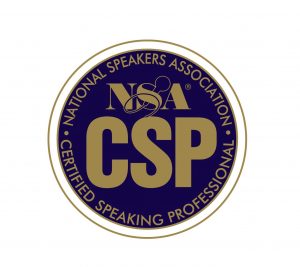Have you noticed that many people are experiencing a level of restlessness, edginess, weariness at work?
Maybe it’s political campaign fatigue. But I began to think that people might be missing or seeking a deeper sense of hope or inspiration.
Maybe it’s both. But what’s the difference?
Hope and Inspiration
My trusty Webster’s dictionary says that hope is “to want or wish with confident expectation.” Inspiration on the other hand is “the stimulation of the intellect or emotion to a high level.”
I’m very clear that most people really want to do a good job at work. When a person starts a new job, there is a hope, or confident expectation, by both the boss and the employee that it’s a good fit or a good match. But somehow when the honeymoon is over and that bright new star with the fresh ideas has become the thorn who doesn’t fit in…. those confident expectations become a distant memory.
49.5% of People Are Disengaged
Recent Gallup studies indicate that only 34% of employees are engaged in their work. 49.5% of employees are not engaged. And 16.5% are “actively disengaged.” That’s a very scary thought. Who knows what kind of mischief is taking place when someone is “actively disengaged.”
Stupid Comments Create Disengagement
Yet, for some reason people say and do the stupidest things that in one fell swoop can destroy any hope or inspiration.
It reminds me of an executive who used to say “we need to get rid of the bad people.”
As the VP of Human Resources, he thought that was my job. I remember thinking: “Were they “bad” when you hired them? Or did they turn bad afterwards? And what made them become bad… on your watch, by the way. Doesn’t say much for your leadership then, does it, Mr. Executive Vice President?”
I kept those thoughts to myself, fearing I’d be revealed as one of the “bad employees.”
A couple years later, at a different company, the CEO proudly pronounced the annual “austerity program,” as a way to inspire people to reduce costs.
Silly me, this time I spoke up. I told him that I didn’t think people would find austerity inspiring or would jump out of bed in the morning and say “oh boy – how can I contribute to this austere environment?” I suggested creating a ‘profit maximization program’ instead. There was a blank stare and long, painful silence. I think that’s when I became one of the “bad people” – again.
In retrospect, I realized that even though I was the vice president of human resources for several companies, I was probably not a very good employee because I seemed to question things like that. I had joined the ranks of people who had just lost hope and was not inspired by mediocre leadership. I was disengaged and disappointed because I wasn’t able to fulfill what I was hired to do, which was to bring about change.
How Are You Inspiring Hope and Inspiration?
So I ask you this: Are you letting people perform their jobs? Are you honoring the talents that you saw when you hired them?
If you want to avoid “active disengagement” and increase hope and inspiration, here are two more things to think about:
What are your hopes or confident expectations about your work and place of employment? And are you acting in a way that supports those beliefs?
If you manage people, are you communicating in a way that creates hope and inspires contribution? Are you providing a vision and feedback that fans the flames of people’s passion and commitment, or do you snuff it out, preferring the status quo?
Marty Stanley, CSP, is a national speaker, author and consultant on organizational change. 17 years ago she left the corporate world and dedicated herself to helping leaders create healthy, productive and profitable work cultures. If you’re interested in an outside perspective to jump start organizational change and provide the support and structure for your internal team to maintain it, contact Marty today: martystanley@alteringoutcomes.com 816-695-5453.
For more information on being a Type T leader, watch this 1 minute video.
Or order the book on How to Be a Transformational Leader in a Bottom-Line World.









